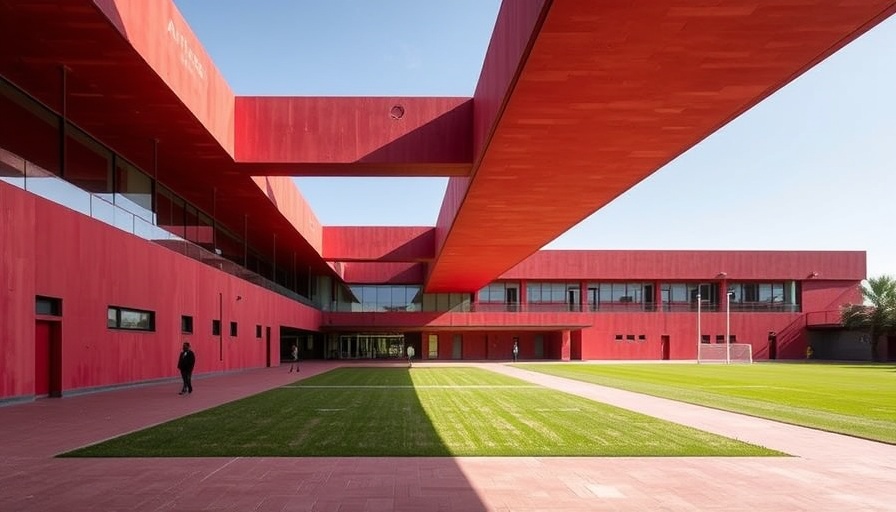
Atlas FC Academy: A Blend of Functionality and Aesthetics
In recent years, the workspace has evolved beyond traditional office environments, especially for those working remotely. One of the latest architectural marvels dedicated to fostering creativity and productivity is the Atlas FC Academy designed by Sordo Madaleno Arquitectos in Guadalajara, Mexico, which beautifully incorporates red concrete into its structure. The vibrant color and unique material choice are not only visually striking but also create a stimulating environment for training young athletes, demonstrating how design can significantly influence functionality.
Why Colors Matter in Workspace Design
Color psychology plays a vital role in how we perceive our workspaces. For a sports academy, vibrant colors like red can evoke feelings of passion and energy, essential for young individuals in training. Studies show that color can impact mood and productivity; hence, incorporating energetic hues in spaces dedicated to physical activity, like the Atlas FC Academy, can enhance motivation and performance. For digital nomads creating remote workspaces, understanding how colors affect your mood can make a significant difference in productivity levels.
The Ergonomics of Space: Tailoring Design for Functionality
Sordo Madaleno's design focuses on an ergonomic approach, considering how athletes will interact with the environment. These considerations might align closely with how remote workers design their spaces for comfort and efficiency. Ergonomics not only enhances physical comfort but also fosters a productive mindset. This could translate to digital nomads understanding their specific workspace needs, such as proper chair height, desk dimensions, and how to use natural light to their advantage.
Creating a Seamless Blend between Indoor and Outdoor Spaces
The Academy's design features open spaces that seamlessly connect with the outdoors, allowing natural airflow and light to filter in. This concept is vital in workspace design, as studies indicate that a connection to nature can reduce stress and enhance creativity. Digital nomads can adapt this approach by incorporating plants in their workspaces or positioning their desks near windows, leading to a more inviting and energetic work environment.
Future Trends: Eco-Friendly Spaces
With increasing awareness of environmental sustainability, architects are focusing on eco-friendly designs. The Atlas FC Academy utilizes local materials like red concrete, which blends in with the regional landscape while providing durability. For remote workers, making conscious decisions about workspace materials—from choosing sustainable furniture to reducing energy consumption—can enhance not only comfort but also personal well-being and eco-friendly living.
Practical Tips for Designing Your Remote Workspace
As observed in the design of the Atlas FC Academy, the integration of thoughtful architecture can significantly enhance productivity. Here are some practical tips for remote workers:
- Select Ergonomic Furniture: Invest in a comfortable chair and desk that promote good posture.
- Incorporate Natural Light: Position your workspace near windows to benefit from sunlight.
- Add Personal Touches: Use colors and decorations that inspire you and resonate with your work ethos.
- Designate a Dedicated Space: Having a specific area to work can help create boundaries between work and personal life.
Ultimately, the Atlas FC Academy serves as an inspiring model for how thoughtfully designed spaces can enhance productivity, whether for athletic training or remote work. As digital nomads seek effective and comfortable workspaces, embracing the insights from architectural innovations can lead to a healthier working life.
Ready to revamp your remote workspace? Become proactive in creating an efficient, comfortable environment tailored to your needs. With the right design elements and understanding of ergonomics, you can significantly enhance your productivity and well-being. Don’t wait—take action today!
 Add Row
Add Row  Add
Add 




Write A Comment